I know it’s hard to believe but there was once a moment in time when, if people wanted to become well known for a particular skill of theirs, they actually had to prove their talent or, at least, work for their slice of fame. I know, crazy, isn’t it?
Nowadays, of course, getting on television is as easy as…well, saying ‘I want to be famous’. There are so many talent shows and reality programmes on all year round, not to mention the 24/7 online route, that saying something outrageous near a camera practically guarantees you a go at the big time. And you don’t actually need to have any aptitude for anything; in fact, the worse you are, the more likely you are to receive your 15 minutes.
It didn’t always work like that, however. Before the ‘everybody can be a star’ banner that we live under today was put up, working your way through drama school, putting the time in as a Redcoat at Butlins or bravely taking the stage at working men’s clubs or end-of-the pier shows seemed to be the most likely ways to eventually get your chance to make a name in entertainment.
If you didn’t fancy any of those you could always aim to get noticed via the television talent show. Opportunity Knocks is a good example of these: starting on the radio in 1949 it transferred to ITV in 1956, then BBC1 in 1987 and ran until 1990. It propelled many household names to careers in showbiz (although, given the following list, that may not necessarily be counted as a good thing), including Paul Daniels, Darren Day, Su Pollard, Bonnie Langford, Les Dawson, Roy ‘Chubby’ Brown, Frank Carson, Pam Ayres, Paper Lace and Lena Zavaroni).
New Faces followed in 1973 in much the same style. A pilot was shown on ITV in July and, following a positive reaction, transferred into a full series in September, accompanied by theme tune ‘You’re a Star’, sung by Carl Wayne (who used to be in rock band The Move).
The format of New Faces was simple: contestants would perform in front of a panel of four ‘experts’ (which, over the years, included entertainment giants such as Lionel Blair, Terry Wogan, Lonnie Donnegan, Ed Stewart and – um – Noel Edmonds). They would be judged in three categories: ‘Star Quality’, ‘Presentation’ and ‘Content’ (in later years, ‘Star Quality’ was renamed as ‘Entertainment Value’), receiving marks out of ten for each.
So, for all you non-mathematicians out there, each performer was looking to get as close to 120 points as possible (a 30 point maximum from each of 4 judges, see?). The perfect score was only ever achieved once; by the multipotentialite Patti Boulaye, although Les Dennis (host of Family Fortunes and still the UK’s premier ‘Mavis from Coronation Street’ impressionist) came pretty close, with a very impressive 119.
Like Opportunity Knocks, New Faces was the starting block for many now well-known faces and voices. The comedy world has benefitted from the auditions of Lenny Henry, Mick Miller, Victoria Wood and, to a lesser extent, The Chuckle Brothers. Television and stage performers Michael Barrymore, Gary Wilmot, Malandra Burrows (who was only 9 when she won in 1974), Roy Walker and Roger De Courcey (with Nookie Bear of course) were first spotted on the show, as was pop band Showaddywaddy. It did also throw Jim Davidson into the spotlight but you can’t have everything.
New Faces was filmed at the Birmingham Hippodrome and was presented, to begin with, by TV and radio broadcaster Derek Hobson (also known for hosting the amazing canine game show That’s My Dog). He was at the helm of the ATV original version of New Faces, which ran for five years until 1978. When it was reincarnated by Central Independent Television in 1986, former contestant (and, indeed, winner) Marti Caine was in charge of proceedings. The format remained the same: a panel of experts (if you consider ‘Nasty’ Nina Myskow and Maggie Moon experts in judging talent, of course) cast a critical eye over the acts although now home audience’s votes were taken into consideration too. These were sent in via postcard (first two series) and phone vote (last series) and helped determine which act would go through to the grand finale.
The audience were also allowed to show their appreciation for the acts by way of an electronic button. A huge lightboard on the stage, known as ‘Spaghetti Junction’ due to its uncanny resemblance to the overly-complicated, twisting road structure, would reflect which performer was the most popular with them. Caine always got over-excited when this part of the show rolled round, screeching her catchphrase ‘Press your buttons – NOW’ at them in increasing tones of hysteria.
Viewing figures for Caine’s version of the programme were high, although the acts in the first revamped finals didn’t quite go on to the heights of fame or longevity of career set by those in the ATV version. The 1986 winner, comedian Duggie Small, is clearly no longer a famous comedian and the only other person I have heard of in the line-up is comedian Billy Pearce although, as he was labelled ‘West Yorkshire’s King of Panto’ in a newspaper last year, it’s safe to assume his career probably hasn’t panned out quite as he’d hoped.
1987’s final produced at least one recognisable name: Joe Pasquale came second to ventriloquist Jimmy Tamley but it’s Pasquale who has gone on to have the most successful career. 1988’s winner was so memorable that the internet appears to hold no trace of him/her, even on pages dedicated to New Faces. If anybody does know who actually won that year, please send in your answers on a postcard, to the usual address.
New Faces came to an end after nine series and 206 shows. It brought us a huge scale of talent: from much-loved stars in the form of Victoria Wood and Lenny Henry all the way down to the Chuckle Brothers and West Yorkshire’s King of Panto. What a show.




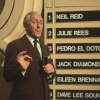
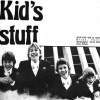
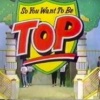
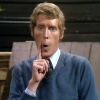
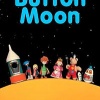
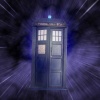
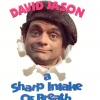
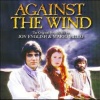
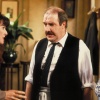
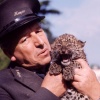
Do You Remember New Faces?
Do You Remember New Faces?